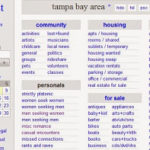If you’re like many people, you find that you have a lot on your to-do list and it often leads to a struggle to get everything done. There is one habit that you can develop that can help you achieve more in your day – learning how to work in time blocks.
This is a time management habit where you separate the projects and tasks that you have to work on into dedicated blocks of times so that you get it done. Instead of sitting there feeling overwhelmed with your time management, you’ll be zeroing in on a very specific strategy that helps you end your day with fewer items left on your list.
Why Time Blocks Are More Effective
Time blocks are effective because they cut out procrastination and other wastes of time. They’re more effective for you to use to be able to get work done. You won’t have to sit for prolonged periods of time wondering what you should work on next, or for how long.
For example, if you have to go to the dentist, you may have the habit of writing off the rest of the afternoon as being unusable. But if you’ve divided your afternoon into time blocks, you’ll be able to see the trip to the dentist only used two of those time blocks.
That might leave you three more time blocks you can utilize to build your business or get things done rather than just wasting them. Time blocks are also motivating. If you sit down and think you have to work for several hours, you can get overwhelmed because you start to think about all that you have to get done as a whole.
You end up just wanting to play a game online or do something else. But if you have a time block where you say “I’m only working on this for half an hour or fifteen minutes,” then suddenly it doesn’t feel so overwhelming and you’re more productive.
When you use time blocking as a strategy, it’s effective because you have to look at what you need to get done and choose what to prioritize over something that’s less important.
Time blocking can help you to concentrate on your work for a specific amount of time. Not only does this increase your focus, but it also cuts out distractions. Sometimes, it can be tempting to go over a project or task repeatedly before taking action on it.
Having a time block only gives you a limited amount of time, so you’re more likely to get it done rather than continually going over a step or the entire project. Setting up time blocks is effective because it gives you a map for what you should be doing.
This helps to end productivity lags due to not knowing what to work on or what steps need to be completed during your day. This enables you to reach more of the goals that you set – not only for your business life, but for your personal life as well.
Time blocks are set up so that you work on one thing at a time during your block. This can prevent you from trying to work on several things at once, which splits your concentration and can limit your ability to get stuff done.
It’s a common thing for people who are busy to say that they don’t have enough time. However, once you set up your day by dividing it into time blocks, you’ll realize just how much time you truly do have to get things done and how much time you may have been wasting.
What Type of Time Blocks Do You Need?
Before you can set up your time blocks, you’ll need to know what type works best for you. To figure that out, you need to know how much time it takes for you to be productive.
It won’t be the same for everyone. Some people find that they’re most productive if they set up their time blocks so that they work for 25 minutes but then break for 5. If that’s the same for you, then an ideal time block would have to be a total of 30 minutes.
But if you’re someone who has difficulty concentrating, then a 15 time block might be what works the best for you. Some people need to sit down and really immerse themselves in the work in order to be productive.
For people like that, having an hour time block that lets them work longer would probably be the best. Keep in mind that your time blocking management system can change over time.
For example, maybe initially, you needed the block where you got to work for an hour at a time. But something is going on in your personal life that you can’t change right now.
So you can shorten that hour block into two half hour ones or four fifteen minute ones.
The key is to make the time blocking work for you – but it’s not something that has to be set in stone. You may find that there’s some trial and error when you first get started.
Set it up how you prefer it in the beginning but later, you’ll be able to look back at your schedule to see where your time went.
This might show you that you only needed half an hour for a task you routinely do that you always thought took you forty-five minutes. You can then adjust your schedule going forward to reflect the time difference.
Or, if you’re someone who likes to have some built in time to go back over your work just to double check it, then you can leave the extra minutes in that block. When you set up your time blocks, it’s helpful if you color code them.
You can choose whatever colors that you like but you want to have two different colors so that your home or personal time blocks are different from the ones dedicated to your work.
So for example, you could use green for anything associated with work and you can use various shades of green. You can have different colors for things like grocery shopping, bill paying, doctor or dental visits, running errands and more.
There are easy to use online apps that will allow you to easily add, take away or modify your time blocks. One of the great things about time blocking is that at the end of the day or week when you look back, you’ll be able to see how much you actually got done.
You’ll also be able to tell at a glance if you have time to do something that crops up – or not – like if someone asks you to go out for lunch or do them a favor and run an errand for them.
How to Use Your Time Blocks
The thing about time is that you either use it or it slips away from you. By setting up time blocks, you’re making the most out of all your days. Start by setting up your evergreen or automated time blocks.
These are the things that usually won’t change. For example, you might have things like: take a shower, brush your teeth, eat breakfast, take your kid to school in your first of the morning time blocks because these are things that you’re going to have to do.
So you could start your daily time block with whatever it takes you to get ready for your day. Next, you’ll want to know what your work is that you need to get done that day and you’ll block that time off.
If you run your own business, or you get to work from home, you can usually decide what your hours are going to be. You’ll want to choose the time of day where you’re the most productive and it can be helpful to know that this is one of your strengths.
For example, you might do really good at graphic design in the morning, so you know to save morning time blocks for tasks involving that. But if you’re dragging in the afternoons, it might be harder to work on graphic design – so you might want to consider saving that for checking email, participating on social media, and other things instead.
It’s okay to block off similar tasks into back to back or even in one time block. For example, you might have three or four meetings that you have to attend either in person or virtually.
It’s okay to schedule those around each other. So you could schedule a meeting at one. If you know it should only take about fifteen minutes, you’ll still want to build a time buffer.
So you would block out from 1 to 1:30 for that meeting and then from 1:30 to 2:00 for the next one and so on. Even if you know a meeting or task should only take a specific amount of time and you’re good at controlling meetings or tasks to stay on point, you can’t control interruptions.
So you do need to have a plan that takes that into consideration. It can be helpful to check your schedule at the start of each week to see how many time blocks you have for work and then subtract time blocks for things not associated with work.
What’s left over will show you how much time you truly have to accomplish your work or build your business. A great thing about time blocking is that this habit can also show you at a glance when your life is out of balance.
If you check your schedule and you see a ton of blocks that are dedicated to work and only a few for relaxation or family time, you can see that there’s a problem. Seeing this can help you to prioritize what’s important to you.
What If You Don’t Have Enough Time Blocks?
The question that always comes up when dealing with time management is what to do when you don’t have enough time to create the number of time blocks you need in order to get everything done.
You might feel that you work so much and that you’re so busy in your personal as well as your professional life that you don’t have enough time to even do what must be done – let alone what you want to do.
If you feel that you don’t have enough time blocks, the problem isn’t really a lack of time. It’s that you’re not managing it well. There are always signs that this could be an issue.
If you don’t get out of bed when the alarm goes off or you don’t even bother to set one, that can steal time.
You might stay up too late so you sleep in and end up missing the most productive part of your day. Or, you don’t get enough sleep and you’re too tired to really be effective, so it takes you twice as long to get your tasks done.
You might think that the problem is that you don’t have enough time blocks because you’re so busy multitasking. But research has shown that multitasking actually slows you down.
It causes a lack of focus as well as a loss of quality work. Not having enough time could mean that you’re just not accurately dividing your time in a way that’s productive. You might be someone who flies by the seat of your pants, so your time blocks aren’t tight enough.
If you’re giving yourself too much time to goof off or procrastinate, then you have to really push it to get stuff done. It’s not that you don’t have enough time, it’s that you wasted time.
Sometimes people don’t feel they have enough time blocks because they lack organization. Their personal or professional life is a mess. If they needed a folder on their computer, it could turn into an hour long search because they have too much junk on their computer and nothing is saved or labeled correctly.
Chaos is always a stealer of time. A lack of prioritizing is also a reason why some people feel they don’t have enough time. It’s not that you don’t – it’s that you may be giving time to things that are simply not that important.
For example, it might be important that you spend time exercising, but it’s not important that you spend forty-five minutes gabbing with the neighbor. To spend time wisely, you have to first understand what it’s worth and what it truly costs you when you waste it.
Not feeling that you have enough time blocks could also be a problem if you’re someone who’s easily distracted. You might be working hard on whatever you’ve scheduled during a time block, but then you notice a new game online.
Or a new email pops up. Or a social media notification appears and the next thing you know, you’ve wasted nearly an hour chasing something other than the task you’d set out to do.
Time Blocking Mistakes to Watch Out For
Time blocking is a system that can improve your life and help you to be less stressed while being more productive. However, you do want to be careful that you avoid some of the most common mistakes that people make when using this type of system.
It’s a mistake to not know the amount of time you have to give to your scheduled tasks. You might think that you can accomplish 15 things during your day when you can actually only get 10 done.
So right off the bat, you’re setting yourself up for failure. Then once you fail, you’ll start to feel like you have too much to do and that leads to overwhelm. Most people commonly write a longer to-do list than they can realistically follow.
It’s a mistake to be too rigid. There will be things outside of your control that will disrupt your time. Some of these things you can quickly deal with and get back on track – like your kid interrupting you.
But others will claim the entire time block. What you need to make sure you do is not to have a now or never mindset. Just adjust and get back on track. It’s okay to go back to your time blocks and create a slot to make up for the time you lost.
It’s a mistake not to write out what you have to do and give that task a number based on its level of importance. For example, it’s important to do the things that bring peace to your home life or keep your home running.
It may not be as important to get that room painted right now. It’s a mistake not to align your time blocks with your goals. If one of your goals is to lose weight, then your time blocks should reflect that you’re scheduled to go to the gym or to get in a workout.
It’s a mistake to let distractions frustrate you to the point that you give up. If you’ve had a problem in the past with stuff getting to you, then block out time for that. You could give yourself ten or fifteen minutes a day and just label it as “blow off steam” and go do whatever gives you some time to chill out.
It’s a mistake to let procrastination continue. Everyone has something they procrastinate at. But if a task is put off continually, then it can become a big deal in whatever area of your life it’s in – whether it’s relationships, finances, health, home repair, etc.
By blocking in the stuff you normally procrastinate at, it will help you get it done. It’s a mistake to be too busy. You can’t always go full speed ahead without taking some time off.
Being too busy in life can take a toll on every part of your life – especially your health – so when you’re creating your time management system, make sure that you’re also a priority.
First, divide your blocks up into work and home time blocks. Then go through each area of that division and block off time for specific projects or tasks. For example, you might have time set aside for creating blog content, networking in your niche, conducting research, etc.
For your home life, you might have time set aside for forming bonds with your loved ones – both spouse and children. You may want to dedicated an hour a day to self-care, where you meditate or do some at-home spa tasks.
Stay organized and be flexible with your time blocks. If you set up a system and refuse to budge from it, you’ll become frustrated. Likewise, don’t allow yourself to constantly have too much leeway to the point where you’re not using the strategy properly.
Find that sweet spot that allows you to benefit from the use of time blocks, without making it end up a bigger burden than you felt before. Don’t try to copy someone else’s exact time blocking schedule.
You may have different priorities, skills, tools and talents that allow you to do something faster than another individual who is lacking those things. And if you’re single with no kids, you might have a different work-life balance than someone married with children, too.





